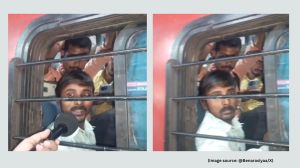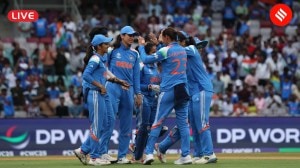Killed in Bihar, Dubey lends life to campaign next door
If the new whistle-blower law is one legacy of Satyendra Dubey _ the NHAI engineer studied in UP, worked in Jharkhand and was murdered in Bi...

If the new whistle-blower law is one legacy of Satyendra Dubey _ the NHAI engineer studied in UP, worked in Jharkhand and was murdered in Bihar after he complained about corruption on a stretch of the Golden Quadrilateral highway_ his other legacy can be found in rural West Bengal.
Dubey is an icon here, inspiring a people’s movement for underpasses and footbridges along the highway that cuts through the red citadel of Bardhaman.
As the National Highway 2 from Delhi to Kolkata — the longest stretch of the GQ — enters Bengal, the fields suddenly turn electric green with young paddy, and giant hammer and sickle symbols hit you in the eye from every passing wall.
The first instalment of the four-lane GQ from Barakar at the Jharkhand-Bengal border to Panagarh in Bardhaman district was completed some time ago. In the beginning, there were no protests — motorists marvelled at the smoothness of the new road and truckers roared, touching speeds unheard of in these parts.
And then the accidents mounted. Agricultural workers, who routinely crossed the road to earn their wages from fields on the other side, were mowed down; peasants had to walk miles to reach a point where they could cross; and pedestrians found themselves stranded by the gleaming highway whose planners had never taken them into account.
It was then that misgivings about the GQ began to slowly rise along the banks of the highway. When construction began on the next stage of the highway from Panagarh to Dankuni (in Hooghly district), the earlier sense of awe had turned to anger.
The CPI(M), whose mass organisations among the peasants, students, women, and workers in Bardhaman district have a membership running into lakhs, was initially hesitant to plunge in. After all, the Left Front government, in its new reform-friendly avatar, had assured full cooperation to the National Highways Authority of India (NHAI).
‘‘Just around that time,’’ says CPI(M) district secretary Amal Haldar, ‘‘the news of Satyendra Dubey’s murder, of his secret complaint to the PMO about corruption in the highways project came out. And it had a huge impact on the movement that burst forth spontaneously.’’
Dubey’s complaint, which The Indian Express exposed and local Bengali papers relayed, only confirmed ‘‘what we had suspected all along, that massive amounts were being spent on the highway — Rs 13 crore per kilometre or 1.3 lakh for every metre — but money was being siphoned off by contractors and not a paisa was being used to look after people’s interests.’’
Soon, the IIT-trained engineer’s ‘‘sacrifice’’ became the rallying point for the movement against the ‘‘corruption’’ and ‘‘callousness’’ of the highway. ‘‘In every handbill, every pamphlet, every speech, Dubey is mentioned,’’ says Haldar, while insisting that the movement is not just backed by the Left but ‘‘by everyone who has been affected by the highway — even Congress and Trinamool have been holding meetings on the issue.’’
Following meetings between NHAI and district representatives (including the DM, local MPs, zilla parishad chairmen and public representatives of nearby blocks and Bardhaman municipality) detailed proposals have been worked out.
Documents available with The Indian Express show that nine underpasses have been okayed in the Panagarh-Palsit section alone, at locations such as Galsi, Kulgharia, Bardighi, Belgram, Ajirbagan, Kanchannagar and Gangpur.
Negotiations between the people’s representatives and the NHAI are intricate and hard-fought. For instance, one document notes that the ‘‘demand for an underpass is dropped’’ but only because the ‘‘NHAI agreed to provide a footbridge at Tejganj with ramp.’’
Similarly, the demand for an underpass at Sheikhpur was dropped ‘‘since a box culvert has been provided which can be used by the pedestrians and cattle crossing’’ and at Dewalia ‘‘the NHAI has agreed to the construction of a cross flyover in due course.’’
District officials also complained that due to four-laning of the NH2, ‘‘the low-lying area along the Burdwan bypass had been filled up leading to serious drainage problem in the Burdwan town.’’ NHAI, fearing protests that would stall their work, agreed to review the drainage plan as well as the demand for a service road ‘‘for taking appropriate action’’.





- 01
- 02
- 03
- 04
- 05


























